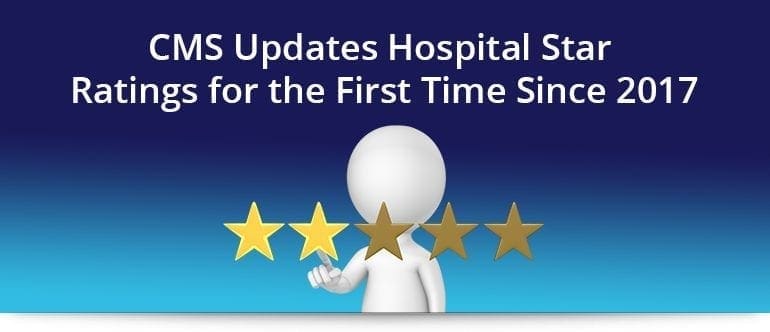Call us toll-free: 800-878-7828 — Monday - Friday — 8AM - 5PM EST

By Rebecca Pifer for Healthcare Dive
Dive Brief:
- For the first time in more than a year, CMS updated its hospital star ratings. The agency collects the data from its Hospital Quality Initiative programs and the public can view the star ratings on the Hospital Compare website.
- The American Hospital Association, which has requested a complete termination of the star ratings program in the past, along with America’s Essential Hospitals, decried the CMS update in statements. AHA called the program “flawed from the outset.”
- CMS also issued potential changes to how it calculates the star ratings for public comment. The proposed changes are meant to improve precision and allow for more direct comparison, such as placing like hospitals into “peer groups” instead of weighing them against the entire pool of facilities.
Dive Insight:
The star ratings program creates a one-to-five star rating meant to allow consumers to quickly and easily compare hospital quality. It’s been controversial since its 2005 start, and CMS has been plugging along since, attempting to workshop the program to provide transparency for the patient and help providers identify areas to improve.
“We constantly aim to improve these resources with feedback from stakeholders, and we are confident this latest update of Hospital Comparedata further strengthens this data,” CMS Administrator Seema Verma said in a statement.
Along with allowing for more direct like-to-like comparison, CMS is debating changing how it groups and weighs measures, shifts in the timeline of reporting the ratings and tweaking the computational method to make it quicker and more precise.
CMS hasn’t updated the current star ratings since December 2017, citing the need to address stakeholder concerns and evaluate the repercussions of any changes in methodology. Ratings are meant to be updated quarterly.
A lot rides on ratings for hospitals. Like a negative online review, a low star rating can impact a provider’s bottom line and damage brand name reputation. Hospital Compare ranks more than 4,000 Medicare-certified, Veteran’s Health Administration and military hospitals.
“CMS’s approach to star ratings has been flawed from the outset,” AHA EVP Tom Nickels said in a statement quickly following the news. “Today’s update has not addressed the major concerns about the methodology and usefulness of the star ratings.”
Nickels also disclosed AHA had asked CMS to postpone the release until “concerns about the methodology could be remedied” and made more reliable.
Critics like the AHA and AEH say the program heaps more regulatory burden on health systems without adding any benefit to the patient, that it’s misleading and overly simplifies the complexity of health outcomes that feed into the ratings system and inform its results.
“Those flaws contribute to ratings that mislead consumers and disadvantage hospitals that care for vulnerable patients, rather than reflect true hospital performance and improvement,” AEH CEO Bruce Siegel said in a statement. “The ratings also fail to account for social risk factors beyond a hospital’s control and that affect performance.”
The program has been accused of penalizing safety net hospitals by not accounting for differences in patient population, and teaching hospitals by disregarding the complex conditions treated there. A March 2018 consultancy analysis confirmed that the previous star ratings system was biased in favor of specialty hospitals over major teaching hospitals.
CMS has staunchly defended the program in the past, with a spokesperson telling Healthcare Dive last year the methodology is “scientifically rigorous.”
Public comments on the proposed changes to the star ratings methodology are due March 29.
